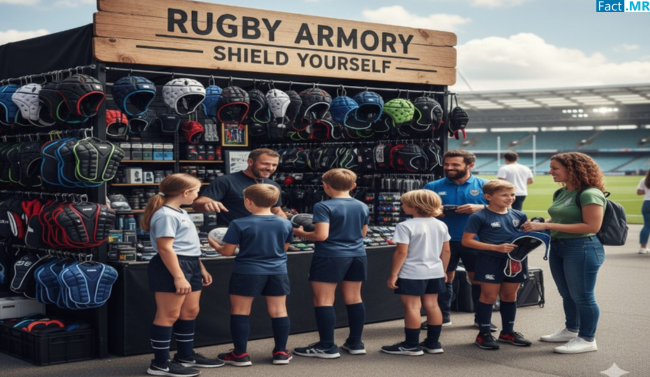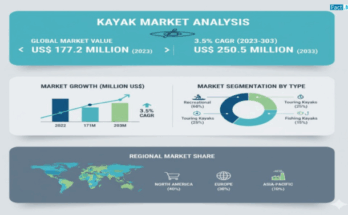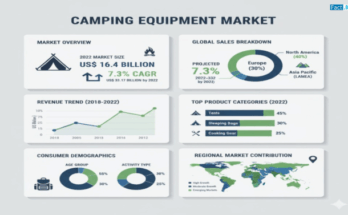Rugby is a high-contact sport that demands both physical skill and mental resilience. As the game grows in popularity worldwide, the importance of player safety has become increasingly prominent. Rugby protective gears, including headgear, mouthguards, gloves, and protective vests, play a critical role in minimizing injuries and improving on-field performance. These gears are designed to absorb impact, reduce concussion risks, and provide comfort and flexibility during matches and training sessions. With rising awareness of sports safety and technological advancements in protective equipment, the rugby protective gears market is witnessing notable growth.
Market Overview
The global rugby protective gears market is expanding steadily, driven by increasing participation in rugby across professional and amateur levels. The market covers a range of protective equipment tailored to meet the specific needs of rugby players. Manufacturers focus on producing lightweight, durable, and ergonomically designed gear that enhances mobility while providing maximum protection.
Modern rugby protective equipment integrates advanced materials, such as high-density foams, impact-resistant plastics, and smart sensors, to improve safety and comfort. These innovations allow players to perform at their best while reducing the risk of injuries. Additionally, the inclusion of rugby in international competitions, such as the Olympics and various World Cups, has elevated the demand for high-quality protective gear.
Key Market Drivers
Several factors are driving growth in the rugby protective gears market:
- Increased Safety Awareness: Rising concern over concussions, head injuries, and other sports-related risks is prompting players and organizations to invest in protective gear.
- Global Expansion of Rugby: Initiatives by World Rugby and local rugby unions to promote the sport in emerging markets are boosting equipment demand.
- Technological Innovations: Advanced materials, lightweight designs, and smart gear with sensors for real-time impact monitoring enhance player protection and performance.
- Professional Leagues and Competitions: The growing number of international and regional rugby tournaments encourages players to adopt high-quality protective equipment.
- Youth and Grassroots Programs: Increased participation in school and amateur leagues fuels demand for accessible and effective protective gear.
Regional Insights
Adoption of rugby protective gears varies by region, influenced by rugby popularity, safety regulations, and market maturity:
- North America: Strong growth is observed due to rising youth and amateur participation, along with increased awareness of head injuries. Safety regulations and organized rugby leagues support gear adoption.
- Europe: Countries like the UK, France, and Ireland have a long-standing rugby culture. Established professional leagues and widespread youth programs drive demand for high-quality protective equipment.
- Asia-Pacific: Emerging rugby markets in Japan, South Korea, and Australia are witnessing increased adoption. Growth is supported by the expansion of local rugby competitions and international events.
- Other Regions: Middle East, Africa, and Latin America show gradual adoption, driven by growing interest in rugby and infrastructure investments.
Market Segmentation
The rugby protective gears market is segmented by gear type, sales channels, and buyer type:
- Gear Type:
- Mouthguards: Protect teeth and reduce jaw injuries.
- Headgear: Cushion impacts and prevent concussions.
- Protection Vests: Safeguard ribs, shoulders, and chest areas.
- Gloves: Enhance grip while providing hand protection.
- Sales Channels: Gear is distributed through sports stores, online platforms, and specialized retailers, enabling accessibility for amateur and professional players.
- Buyer Type: Buyers include professional teams, schools, clubs, and individual players, with growing demand from amateur leagues and youth programs.
Technological Trends
Technology is significantly shaping the rugby protective gears market:
- Impact-Resistant Materials: Advanced foams, polymers, and fabrics improve durability and energy absorption.
- Lightweight Designs: Ergonomically optimized gear allows better mobility and reduces fatigue during play.
- Smart Protective Gear: Integrated sensors monitor impacts and provide real-time data on collisions, assisting in injury prevention.
- Customization: Tailored protective equipment ensures optimal fit, enhancing both safety and comfort.
Challenges in the Market
Despite growth, several challenges exist:
- Counterfeit Products: The circulation of low-quality, imitation gear hampers genuine product sales and can pose safety risks.
- High Costs: Advanced protective equipment can be expensive, limiting accessibility for amateur and grassroots players.
- Market Education: Awareness campaigns are necessary to encourage consistent use of protective gear among all player levels.
Country-Specific Insights
- United States: Rugby’s growing popularity and increased youth participation have boosted demand for protective gear. USA Rugby oversees numerous leagues and tournaments, encouraging adoption of safety equipment.
- United Kingdom: With a rich rugby heritage and professional leagues like Premiership Rugby, the UK market emphasizes quality protective gear to maintain player safety.
- Japan: Hosting international tournaments and promoting rugby at school levels drive demand for high-performance protective equipment.
- Australia and New Zealand: Traditional rugby strongholds, with a focus on elite performance and safety standards, continue to drive market growth.
Applications and Benefits
Rugby protective gear provides numerous advantages for players and teams:
- Player Safety: Minimizes the risk of concussions, fractures, and soft tissue injuries.
- Performance Enhancement: Lightweight and ergonomically designed gear enables better mobility and comfort.
- Regulatory Compliance: Ensures adherence to safety protocols and league requirements.
- Durability and Reliability: High-quality gear withstands rigorous training and match conditions.
- Youth Engagement: Safety assurances encourage younger players to participate in rugby programs confidently.
Future Outlook
The rugby protective gears market is expected to continue growing due to several emerging trends:
- Smart Protective Equipment: Increased integration of sensors and wearable technology for real-time monitoring.
- Advanced Materials: Development of next-generation materials that enhance protection and comfort.
- Global Expansion: Rising popularity of rugby in non-traditional markets like Asia and South America.
- Replacement and Upgrade Cycles: Demand driven by gear replacement and adoption of newer, technologically advanced products.
Conclusion
Rugby protective gears are essential for safeguarding players while optimizing performance on the field. Growing awareness of sports injuries, technological advancements, and global expansion of rugby are driving the market’s steady growth. With continuous innovation and increasing professionalization of the sport, rugby protective gears will remain pivotal in ensuring player safety, promoting participation, and enhancing the overall experience of the game.



